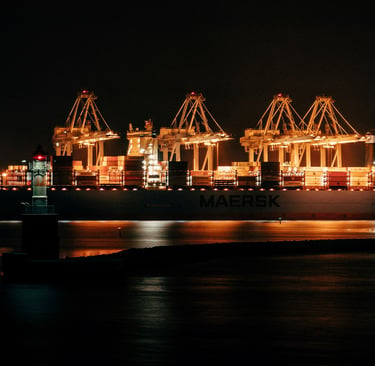Cracking the Asian Distribution Puzzle for SMEs
For American brands and SMEs, Asia represents both an immense opportunity and a formidable challenge. The region is home to billions of consumers, rising middle-class incomes, and digital-first marketplaces. But navigating the complexity of distribution in Asia requires careful planning, trusted partnerships, and a tailored strategy.
10/29/20251 min read


Why Asia’s Distribution Puzzle Matters
Asia continues to lead global growth, driven by rising consumer demand and economic expansion (OECD Economic Outlook – Asia). For SMEs eager to expand internationally, this means a chance to tap into new revenue streams and scale faster than in saturated Western markets.
Yet, success doesn’t come easy. Distribution in Asia is shaped by fragmented markets, diverse regulations, and consumer behaviors that differ sharply from U.S. norms.
Common Challenges in Asian Distribution
Complex logistics and customs – Import rules can vary widely between countries, causing delays and added costs (World Bank – Doing Business in Asia).
Market fragmentation – Southeast Asia alone has 11 countries with distinct languages, cultures, and retail systems.
Trust and relationships – Unlike in the U.S., distribution networks in Asia often hinge on personal relationships and reputation.
Tapping Into Asia’s Digital Channels
One of the fastest routes into Asian markets is through e-commerce. Platforms like Lazada, Shopee, and Tmall are vital gateways for SMEs to reach local consumers directly (Statista – E-commerce in Asia). Many distributors now integrate online and offline sales, making digital presence non-negotiable.
Cultural Adaptation Is Key
Success isn’t just about shipping products overseas; it’s about fitting into the cultural fabric. Brands that localize their approach—whether in packaging, flavor profiles, or marketing—tend to outperform competitors who don’t (McKinsey – The Future of Asia). A “copy-paste” of U.S. strategy rarely works.
Strategic Partnerships Unlock Growth
The most effective way to navigate the distribution puzzle is to partner with local players. A strong local distributor or joint venture partner provides not only logistical support but also market intelligence, cultural insights, and access to established retail channels (US Commercial Service – Exporting to Asia).
Final Takeaway
Cracking the Asian distribution puzzle requires patience, flexibility, and the right allies. By blending digital-first strategies with localized partnerships, American SMEs can reduce risk, accelerate entry, and carve a lasting presence in one of the most dynamic regions in the world.
Photo by Razvan Mirel on Unsplash


